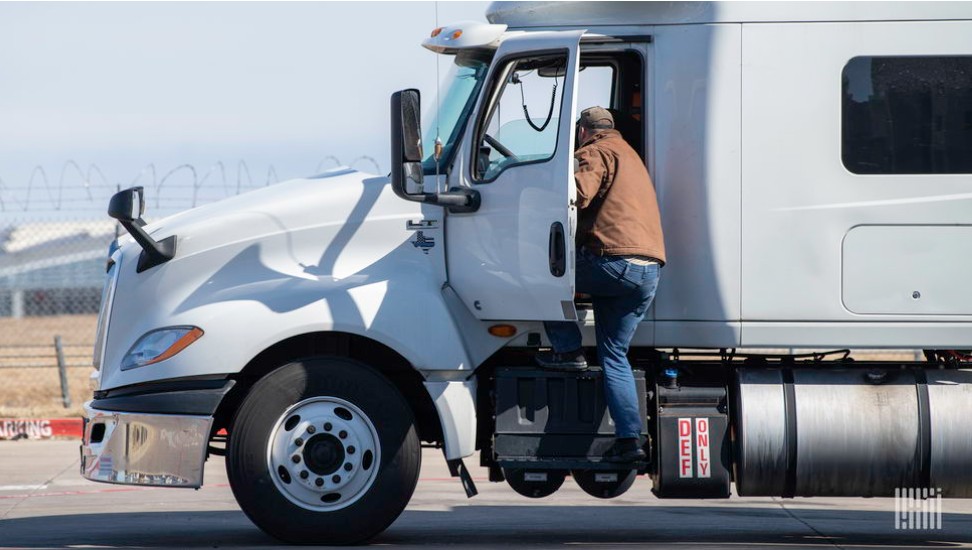In a monthly employment report that was mostly considered disappointing in its estimate of jobs as a whole, the data for truck transportation was solidly positive.
Seasonally adjusted truck transportation jobs rose 3,600 jobs to 1,523,300 jobs, according to data released by the Bureau of Labor Standards Friday.
Truck transportation jobs in July were 6,600 jobs more than a year earlier. In the interim, more months showed a decline in truck transportation jobs than an increase. But two months in particular offset that: the just-released July numbers, and the 8,000 jobs reported as added for March. Those two months alone accounted for more than the total increase over the last 12 months.
The biggest transportation-related shift in the latest report came in the category of warehouse jobs. They took a big hit, down 6,400 jobs after a large 12,000 jobs downward revision for June.
What is striking about the warehouse jobs numbers is that at 1,818,300 jobs, they are at a level that has not been this low since October 2021, when the industry was ramping up month after month to deal with the surge in freight demand following the pandemic. October 2021 jobs were 1,797,600 jobs. Every month after that exceeded the figures for July reported Friday.
The BLS data does not include independent owner operators. And the reports of higher employment are coming even as reports of company closures continue to roll in.
Rates still not covering costs
Mazan Danaf, an economic analyst with Uber Freight (NYSE: UBER) said in an email to FreightWaves that Uber Freight estimates are that “current trucking operating costs still exceed spot rates by about 20% and even slightly surpass contract rates. This suggests that carrier margins are largely disappearing.”
The up and down nature of recent reports on truck transportation employment was noted by David Spencer, director of business intelligence at Arrive Logistics.
“From month to month we are seeing swings back and forth, from positive to negative and back,” Spencer said in an email to FreightWaves. “The inconsistent trends point to both the challenges and opportunity that the trade war and its downstream effects is having on trucking. For many, three years of poor rate conditions have eroded profits made throughout the pandemic and have limited options for how carriers can adjust to survive in today’s market.”
Overall, a depressing report
The bleakness of the report in general was noted by independent economist Aaron Terrazas. He noted that not only were the employment numbers down for July, but there were significant downward revisions for prior months.
“Combined with inflation data from earlier this week, we are now facing the contradictory trends many economists fretted over earlier this year — a visible slowdown in the job market and an acceleration in inflation — sharpening the edge of the Fed’s next interest rate decision,” Terrazas said in an email to FreightWaves. “A single data point is not a trend, and we’ll have another jobs report before the Fed meets next. But today’s BLS data raise the stakes for both hiring and pricing decisions in August.”
Terrazas also cited two other numbers in the report. The new entrant share of those who are unemployed was 13.4%, the highest since April 1988. The share of the unemployed who have been out of work for 15+ weeks was 40.9%, a number not seen since the end of 2021 when the economy was shaking off the impact of the pandemic.
In other data from the monthly report:
After breaking through the $31/hour level in May, the average hourly wage of non-supervisory and production truck transportation employees–which would include drivers–fell back slightly. That data has a one-month lag from the general employment number. It came in at $31.04 in June, down from $31.09 a month earlier. But it has been on an upward trend even as the overall Producer Price Index for truck transportation, released in the first 10-15 days of the month, has been remarkably stable.
There was no movement in rail employment numbers. There were 153,200 workers employed in that sector in July. It was the same as June, though the initial June figure was revised down 700 jobs. The final May number was 153,400 jobs. But the number employed is 2,800 jobs less than a year earlier.
More articles by John Kingston
Averitt pay increase could be a sign of some acceleration in driver wages
Sequential numbers at diversified trucking operator TFI International may mark a turnaround
At C.H. Robinson, improved profitability, productivity and a lot fewer workers

